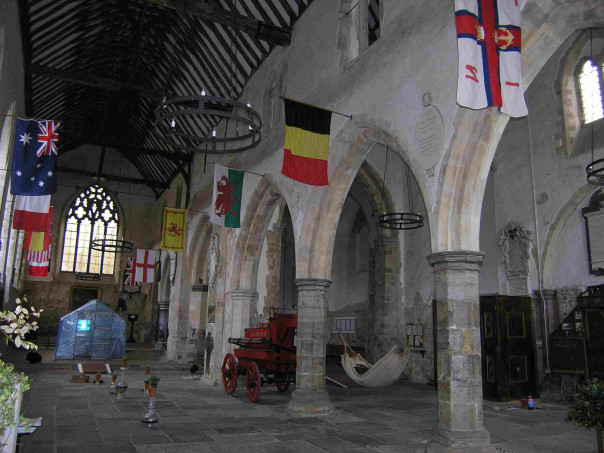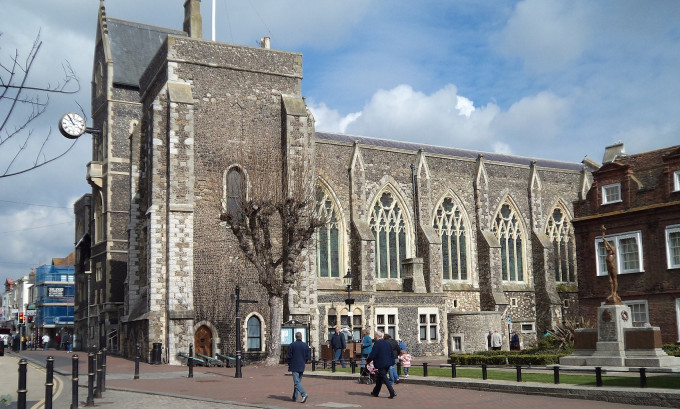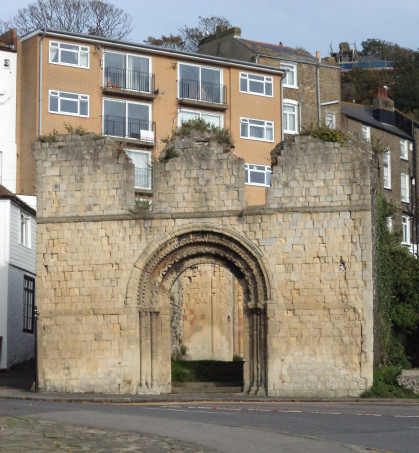I thought I would let you know that Dr Catriana Cooper’s FCAT/CKHH lecture has been rescheduled for mid-May next year and there will be details in the blog nearer the time. Secondly, the KAS Place-Names conference is being postponed until next year, again more details nearer the time.
So this brings me to the next CKHH event. I am delighted to say Professor Alan Stewart, currently Visiting Professor at Queen Mary University of London before he returns at Christmas to Columbia University where he is Professor of English and Comparative Literature, will be coming to Canterbury on Tuesday 21 November to give a lecture entitled ‘The First Coming of the Strangers: An Experiment in Elizabethan Immigration’. This will be at 5pm and take place in the Michael Berry Lecture Theatre, Old Sessions House on the CCCU Canterbury campus. As Professor Stewart says, “In 1561, the town of Sandwich in Kent petitioned the Privy Council to allow a significant influx of immigrants to settle in their town, and practice their skills working with ‘says, bay and other clothe’—a model that was to spread across the south-east of England. Within six years, immigrants in Sandwich outnumbered the previous inhabitants, provoking a predictable backlash. While this immigration is often claimed as a masterstroke of state policy to introduce artisanal skills lacking in England, my paper explores it as a multi-faceted experiment, of importance not only to trade, but also to social relations, religion, education, and the period’s literature.”

This is an exciting opportunity and as well as staff and students from CCCU, we will be welcoming the MEMS community from the University of Kent as well as members of the public to hear Professor Stewart’s presentation. This is a FREE lecture; booking is not necessary, and we shall look forward to welcoming you to what promises to be a fascinating talk.
Since last week’s blog, Drs Diane Heath and Pip Gregory have been planning the new Green Dragon at the Franciscan Gardens, while I got very wet, at least during the first hour, when leading a Canterbury Festival walk around ‘late medieval’ Canterbury last Saturday morning on behalf of Canterbury Archaeological Trust (after Festival expenses, a large part goes to FCAT to support CAT’s work). Nevertheless, my intrepid group stuck it out and were fascinated to learn what it would have been like to live in 15th-century Canterbury, such as what were the commonest trades, what did shops and houses look like, how was the city governed, how important was the Church and just how should we think about place and space in terms of navigating the lived experience of those who were in Canterbury at that time. Also, I think that like people from my first group, everyone got the message that you need to look up because it is the first floor and above that reveals so much of the city’s history.
This brings me to my main section this week, a report on Kieron Hoyle’s presentation to the Kent History Postgraduate group. As always, we had people online and in the room. Furthermore, it was great that Kieron’s fellow postgraduates from west and north-west Kent had come over to Canterbury to support her and to hear what she has been doing concerning her research project on the Tudor history of the Maison Dieu at Dover as it moved from pilgrim hospital to victualling yard.

By way of background, Kieron first explored this pilgrim hospital’s foundation and in particular the career of its founder, Hubert de Burgh who rose from relatively low beginnings to become Chief Justiciar of England, as well as having been Warden of the Cinque Ports between 1215 and 1220, in addition to holding other royal offices during his long and most illustrious life as a high-ranking royal officeholder. For Dover, this was not exclusively linked to the castle, and his interest in establishing a hospital for pilgrims is what he is primarily remembered for locally. Nonetheless, King Henry III would take the name of hospital patron within a decade of having witnessed Becket’s Translation in 1220 when he attended the consecration of the hospital’s chapel, and both benefactors were still commemorated annually up to the time the hospital was dissolved.
Among the implication of this royal patronage for the hospital was the sending of Crown corrodians to the Maison Dieu, as well the use of its accommodation to house certain members of the royal household when they were travelling via Dover. Yet, it was not all one way, and the Crown and others did provide land, rents and other assets to their hospital, albeit perhaps to not the level the master, as the Crown’s nominee. As times this may have led to problems for the hospital for it had become a sizeable institution with a wide property portfolio by Henry VIII’s reign.

For this later period, Kieron concentrated on the penultimate and last master of the hospital, that is their considerable interest as wardens of the harbour. Although John Clark’s activities were relatively modest, John Thompson was very different, having ambitious plans for new harbour works. As well as being highly persuasive, he seems to have been very argumentative as he sought to get his own plan implemented. Moreover, he was not above using the hospital as a store which meant at the Dissolution it was hardy a major change of use, although the remaining hospital brothers found themselves homeless, but at least one continued to work at the local church in Dover.
Kieron next explored these Henrician harbour works and she also mentioned that this has taken her into researching Henry’s love of and use of pageantry, that this period saw the start of a permanent navy and that this interest in the harbour works pointed towards the need for a victualling yard. Additionally, Kieron has begun exploring the growing number of project databases that have become available online, such as Professor Anne Curry’s soldier database and Dr Craig Lambert’s databases offering material on ships, masters, cargos, and the extent of trading links, including the role provisioning Calais played up to 1558 when the place was retaken by the French.

Turning to activities in Elizabethan Dover and the queen’s concern to maintain a navy ready for war, Kieron explained the problems of the mid-1560s, and the need to look towards organising victualling boards and sustaining the harbour. This involved looking for expertise from the Low Countries and the Flemish plan was costed at £16,200, to be paid for though the repurposing of certain port taxes on cereals. Additionally, there was a succession of men who were prepared to take on the supervision of the harbour works, including John True, then Poins and then one from the influential Digges family, which meant to a degree the new harbour was built but the problems caused by longshore drift remained. Thus, although the Crown had spent large sums, it was clear maintenance remained an issue and equally that it was now beyond the town authorities, which meant that early in James I’s reign the Crown took on the harbour.
As an allied topic, Kieron has started examining archaeological reports covering other victualling yards, especially the dissolved Abbey of St Mary of Graces in London. This will give her excellent comparable studies and insights into what happened at Dover. Consequently, as you can imagine, this is developing into an exciting project that generated comments and questions from the audience. And to a degree keeping with this maritime theme, I happened to see the Rev. Catherine Tucker from St Mary’s church in Dover last week who said her parishioners and visitors like the six exhibition banners we provided in the summer so much they are staying in the church unless needed at Dover Museum or at the Maison Dieu. Furthermore, and similarly maritime (in some ways), the Lossenham Project wills group will be meeting down at Newenden next week for one of the group’s in person meetings – more on that next week.
 Centre for Kent History and Heritage
Centre for Kent History and Heritage Sheila Sweetinburgh
Sheila Sweetinburgh 2017
2017


